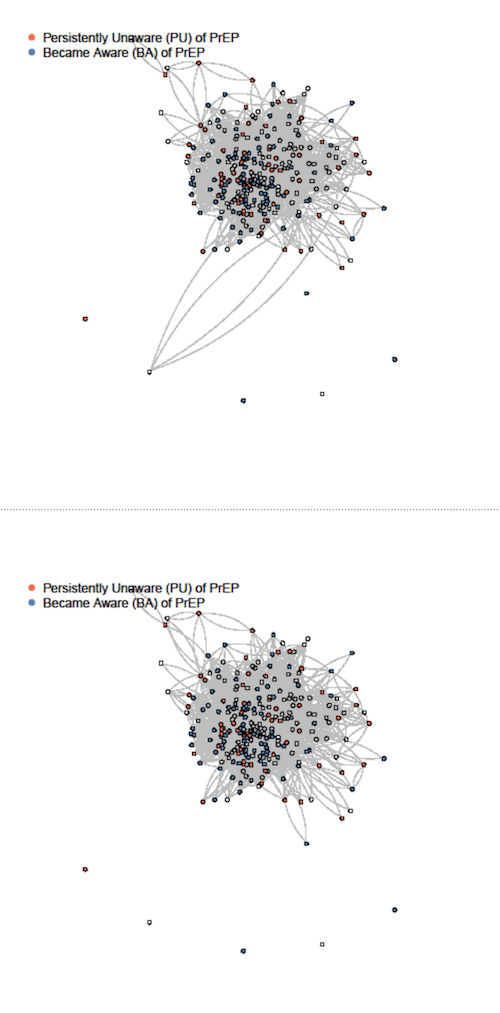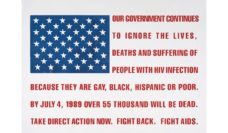Black men under age 30 who have sex with men continue to experience a disproportionate burden of HIV infections. Consistent pre-exposure prophylaxis (PrEP) medication use can substantially reduce the risk of acquiring HIV. Our research group at the Chicago Center for HIV Elimination aims to reduce new HIV infections among young Black men who have sex with men (MSM), by increasing the use of PrEP, which remains low in this population. Awareness and use of PrEP is often influenced by peers, friends, and broader social networks. We used survey data from “uConnect,” a longitudinal study of young Black MSM in Chicago, to examine the association between Facebook network structure and PrEP awareness.
We investigated the social networks of young Black men with particular interest in their Facebook networks. We compared the Facebook “friends” of 266 uConnect participants who remained persistently unaware of PrEP at two visits, with individuals who were unaware at baseline, but became aware by the time of a follow-up visit approximately 12 months later. In addition, we identified candidate ‘peer change agents,’ defined here as those 50 individuals who were best connected to the population to optimally diffuse information about PrEP.
We found that men who became aware of PrEP had a substantially greater number of friends who: 1) were participating in the uConnect study; 2) were PrEP aware; 3) were engaged in behaviors that were previously found to be associated with PrEP awareness (such as having a primary care provider or recent STI testing); and 4) were categorized as peer change agents. Men who became aware of PrEP and those who did not were of comparable age and employment levels, but the latter group had slightly lower levels of education.
While the mechanism for becoming PrEP aware likely combines many factors, the specific individuals in one’s social network might play a role.
The figure below shows that study participants who remained unaware of PrEP and those who became aware had some overlap in their networks. While the mechanism for becoming PrEP aware likely combines many factors, the specific individuals in one’s social network might play a role.
Peer interventions have been effective at improving HIV outcomes in some vulnerable populations, but have had limited success among other high-risk individuals. Recent work has, however, suggested that bio-behavioral interventions may be most effective when they account for the network structure of high risk individuals and utilize peer change agents. We are now using network methods to study how such an intervention can be operationalized.

Acknowledgments
Dr. John Schneider, Associate Professor of Medicine and Epidemiology at The University of Chicago, served as Principal Investigator on the uConnect study. We thank our study participants for making this study possible, and acknowledge the support of the research and clinical staff at the Chicago Center for HIV Elimination. We are grateful for computing resources provided by the Research Computing Center at The University of Chicago.
Feature image: iLexx/iStock













